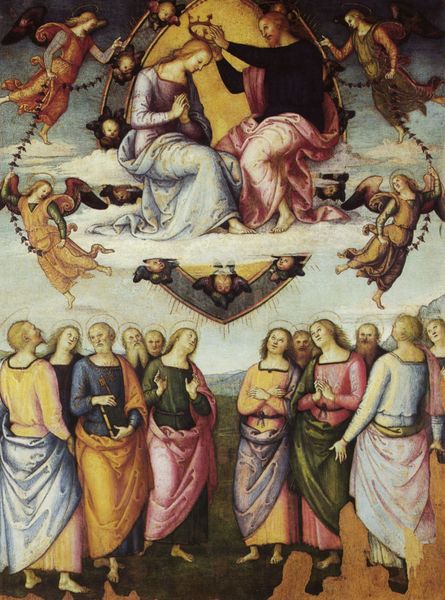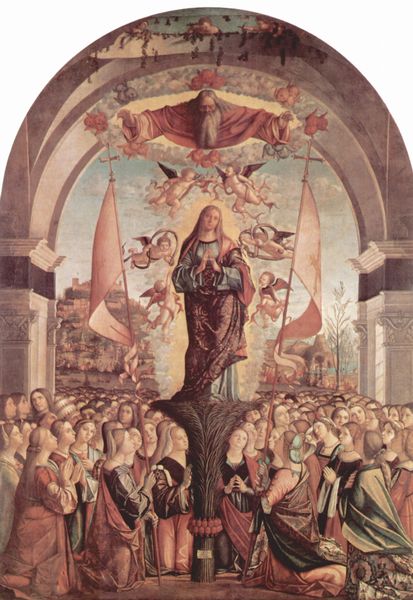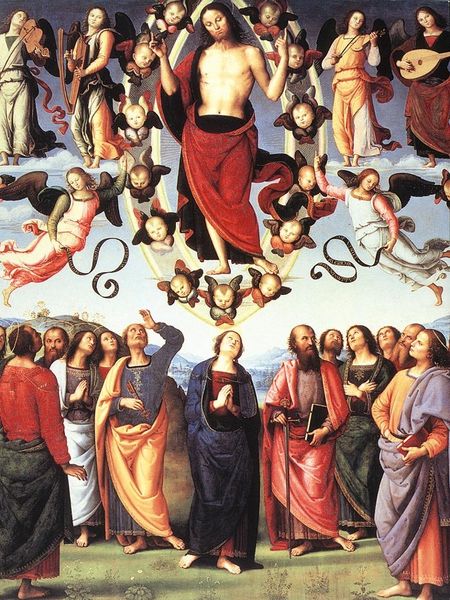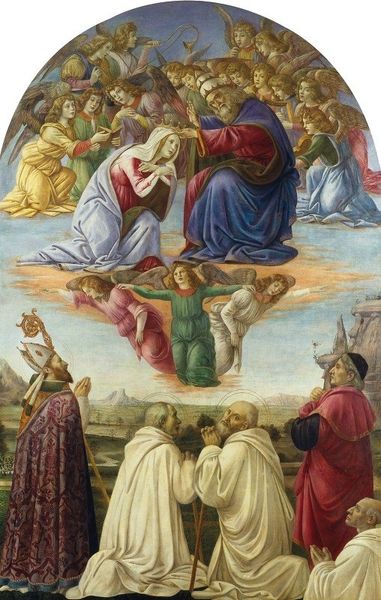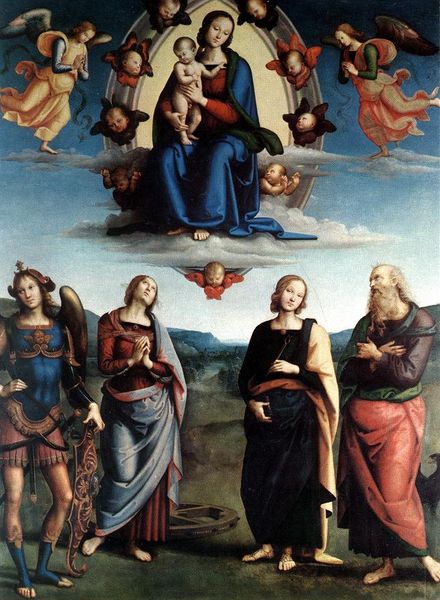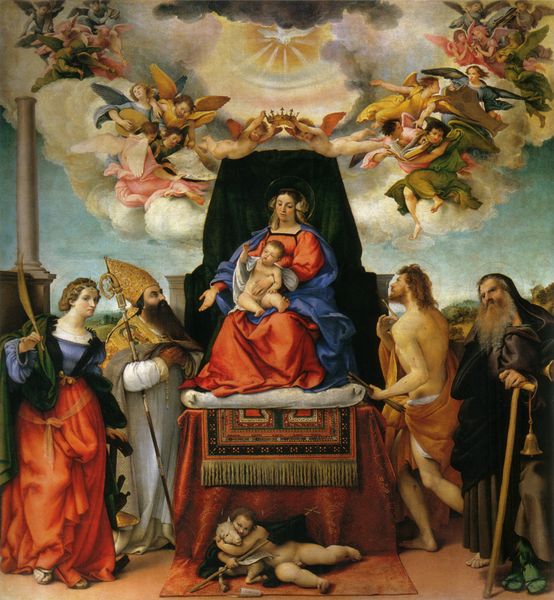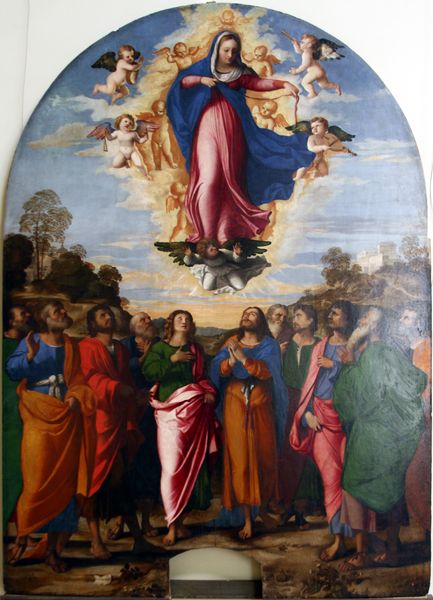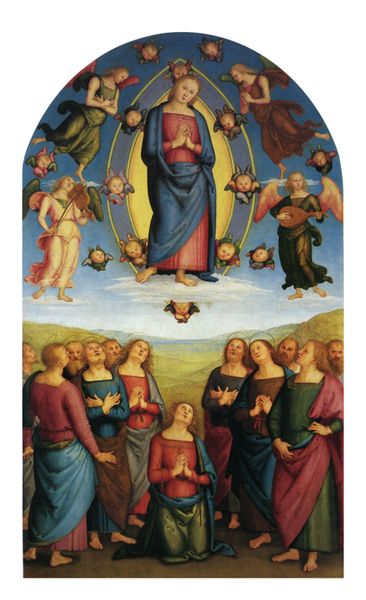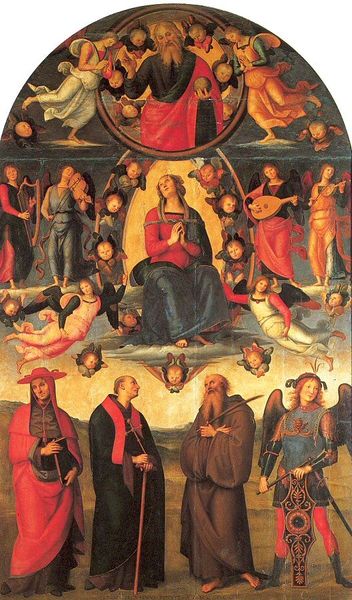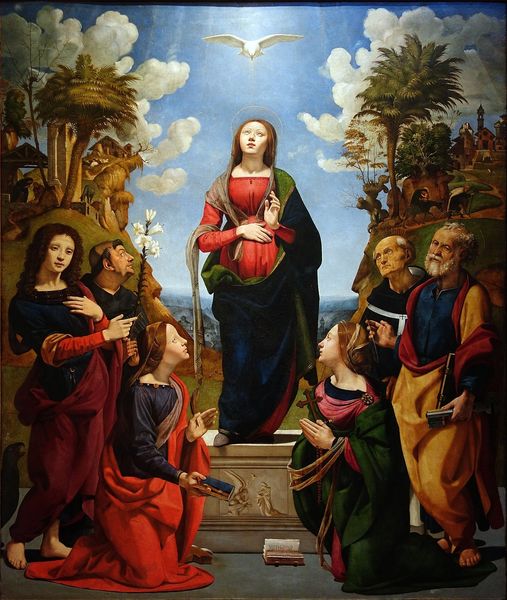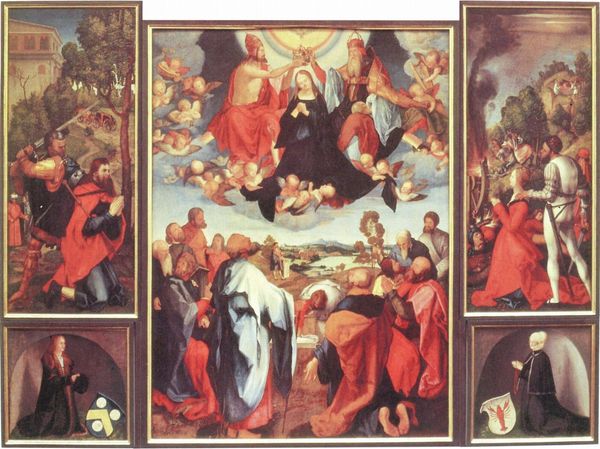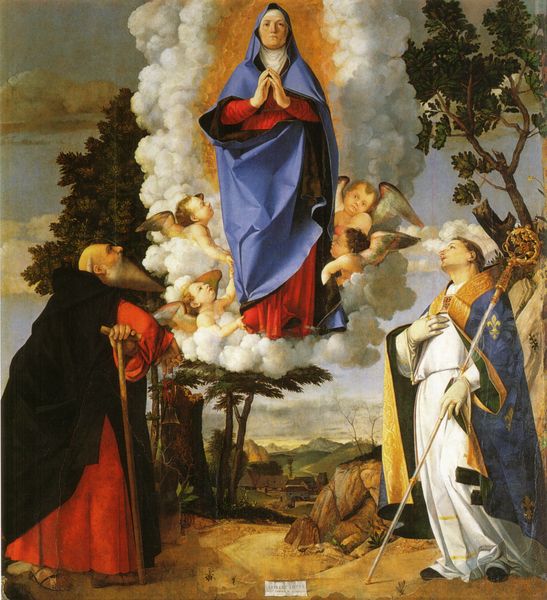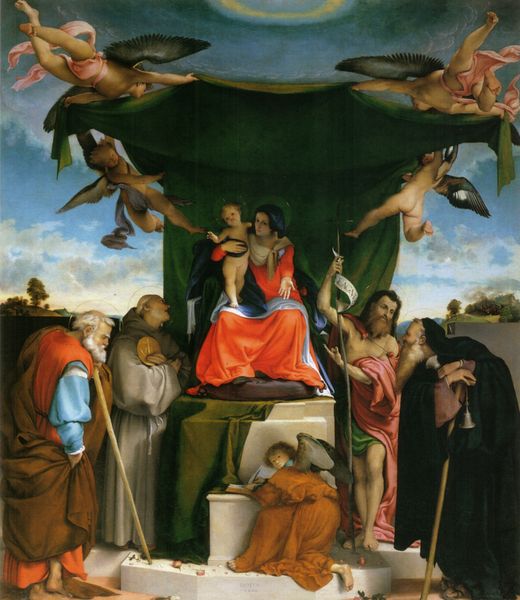
Copyright: Public domain
Curator: Perugino's "Polyptych Annunziata," also known as the "Assumption of Mary," completed in 1506, stands before us. It’s an intriguing example of High Renaissance artistry, rich in religious and historical context. Editor: It's strikingly symmetrical, almost unnervingly so. The arrangement feels very deliberate, almost theatrical, like a carefully staged scene. The colours, particularly the blues and reds, feel vibrant, if slightly unrealistic. Curator: The Polyptych was part of a commission during a period when artistic patronage was deeply intertwined with religious institutions. Pieces like this visually reinforced church doctrine and were used as teaching tools for the largely illiterate population. The idealization of Mary aligns with the theological emphasis of the era. Editor: Observe how Perugino employed chiaroscuro, although gently, to sculpt the figures. The Virgin's drapery cascades in elegant folds. Her face is a picture of serene detachment, quite in line with the Renaissance fascination for idealized beauty. The halos too – such precise circular forms give a strong sense of formal control. Curator: The landscape is fascinating. Notice the vanishing point drawing the eye upward, subtly reinforcing the central message: Mary’s elevation. Also, consider the donors who commissioned this altarpiece—what messages were they trying to send about their own piety and place in society? Art in this period served not only religious but social functions. Editor: Yes, I agree, the perspective definitely adds to the dramatic effect of ascension. However, that elongated almond shape, framing the Virgin – is that purely symbolic, or is there something more stylistic happening there? To me, it pushes it almost toward Mannerism, doesn't it? It moves away from perfect representation towards... stylized emotion. Curator: Mannerist tendencies were certainly creeping in by the turn of the 16th century. Art was constantly in flux and always representing societal tensions! So thinking about what has been presented and why, is so important! Editor: Exactly. That subtle dance between realism and artifice – a dance only possible when you really scrutinise the formal elements.
Comments
No comments
Be the first to comment and join the conversation on the ultimate creative platform.
